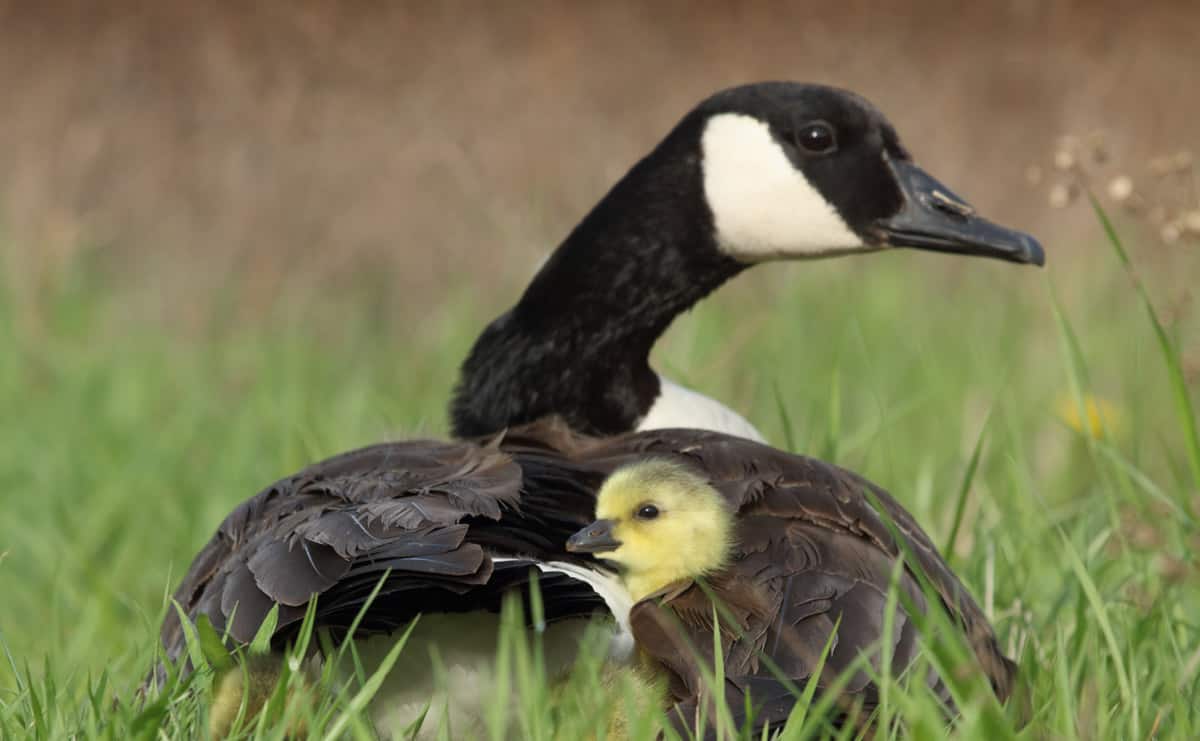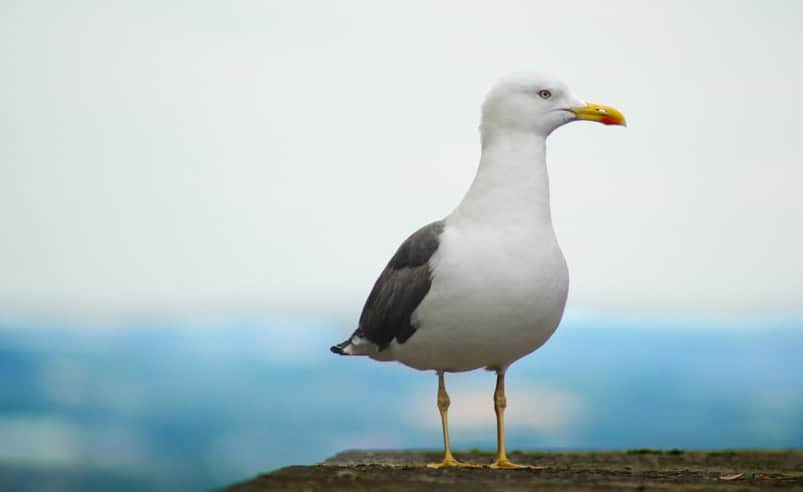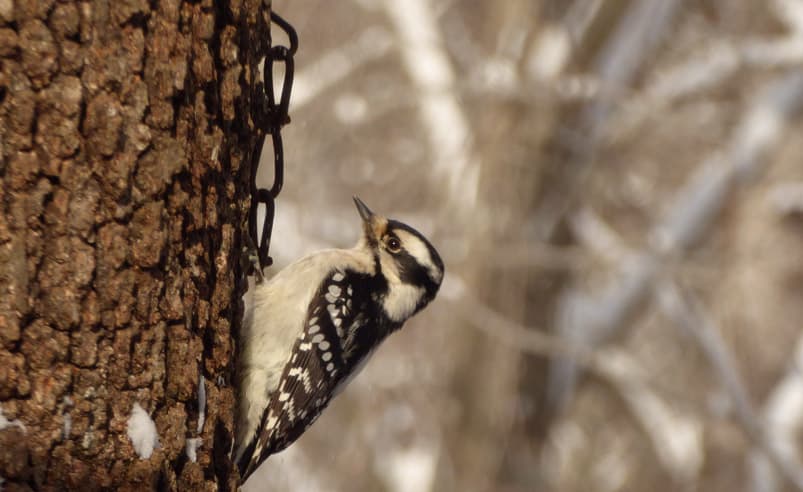Need bird control help on your property?
Training Guide for Birds in Homes
Every year you might have a variety of different kinds of birds trying to nest in your home. One main area birds (starlings) like to nest is in your attic by way of entering the roof eave vents. Be sure you have secured screening or ¼ inch hardware cloth at all roof eave vents. Another type of bird that can damage your homes wood siding is pileated wood peckers or flickers. You may need to call in the Professionals Eagle Pest Eliminators to do this tough job.
Eagle Pest Eliminators is proud to provide all of the affordable and reliable services you need to protect your yard from bird droppings and keep your business running successfully without the noise and mess caused by birds. Our bird control products will take care of your bird problem in an effective, humane, and inexpensive manner. In fact, we take pride in only using the highest quality of products for bird control in Seattle that are on the market. Protect your home, storefront, warehouse, golf course, hatchery, patio, lawn, or orchard and give us a call now!
General Description
The European Starling is a medium-sized, black songbird with short, triangular wings, spotted plumage, and a short tail. The adult in breeding plumage has a distinctive thin, pointed, yellow bill and black, speckled plumage with purple-green iridescence. The non-breeding adult has a black beak and light spots. Juveniles are drab gray-brown overall. Males and females look alike.
Habitat
Starlings are typically associated with disturbed areas and human-altered settings. They can be found in practically all habitats, with the exception of large tracts of undisturbed forests and undeveloped alpine areas. They usually forage in open areas, especially lawns, agricultural fields, or other developed areas, but require nearby nesting cavities.
Behavior
European Starlings tend to form flocks year round, but flocks are generally larger and often huge in fall and winter. They often forage with other species, including Red-winged Blackbirds, Brown-headed Cowbirds, American Robins, House Sparrows, crows, and Rock Doves. When foraging, they generally walk or run along the ground and probe the soil with their bills, looking for food. Starlings can be aggressive and will persistently harass other species to take over nesting cavities. They will also mob predators in flight, gathering into tight flocks and dive-bombing a hawk or other predator. Starlings are intelligent and adaptable, and are capable mimics.
Diet
Starlings eat a diverse, omnivorous diet of invertebrates, berries and other fruit, grains, and seeds. They commonly come to seed and suet feeders.
Nesting
Starlings are generally monogamous, but can be polygamous. They begin nesting early in the breeding season. Males establish territories and choose nest sites, then attract females. European Starlings are cavity nesters, and nests are generally located in natural hollows, old woodpecker holes, birdhouses, or building eaves and crevices. The male generally starts the nest, and the female finishes the job, often removing material that the male placed initially. The nest is a loose pile of twigs, weeds, grass, feathers, leaves, and other material, with a depression in the middle. Both members of the pair help incubate 4 to 6 eggs for about 12 days. Females will sometimes lay eggs in other starlings’ nests. Both adults help brood the young and bring food to the nest. The young leave the nest after about three weeks. The parents may continue to feed the young for a day or two after they fledge, but the young can forage on their own at that time. If this is the first brood, the female typically starts laying a second brood shortly after the first one fledges. The male may provide support for up to 12 days after the young leave the nest, and the young often join other newly fledged young on communal roosts.
Migration Status
European Starlings appear to be partially migratory, but patterns vary regionally and individually. Many birds move into valleys and urban areas during the winter.
Conservation Status
It is hard to imagine now, but European Starlings were purposefully introduced into the United States from Europe. The effort failed twice before a successful introduction of about 60 birds was made in New York City’s Central Park in 1890. Those birds reproduced and spread quickly across developed and other human-altered habitats. European Starlings were first recorded in Washington in 1943, only 53 years later. The first confirmed breeding was in 1951, and by then starlings had crossed into western Washington. The first record in the Puget Sound region was in 1949, and the first western Washington breeding was in 1955. By 1977, only 34 years after they first appeared in Washington, European Starlings were abundant throughout the state. The Breeding Bird Survey recorded only a slight, not statistically significant, increase in Washington between 1966 and 2002. However even if the population increase is leveling off, current numbers are high enough that European Starlings are considered pests. European Starlings have had a strong negative impact on many cavity-nesting birds, Western Bluebirds, Lewis’ Woodpeckers, and Purple Martins among them.
General Description
Rock Pigeons, more commonly known simply as just “pigeons,” are familiar birds in any developed area. Chunky birds with sharply pointed wings, Rock Pigeons are found in a variety of colors and patterns, although all gray is most common. Rock Pigeons have black bills with white fleshy bases, red eyes, red fleshy eye-rings, and salmon-colored feet.
Habitat
Rock Pigeons are found in a wide variety of habitats, especially suburban, urban, and agricultural environments. Their original native habitat is cliff-sides, and Rock Pigeons can be found in eastern Washington nesting on cliffs.
Behavior
Rock Pigeons are fast fliers and are usually seen in flocks. They forage mostly on the ground, but occasionally forage in trees as well. Unlike their agile, native cousin, the Band-tailed Pigeon, Rock Pigeons move about only clumsily in trees. Large groups often congregate along utility wires, window ledges, and rooftops.
Diet
Seeds and grain make up most of the Rock Pigeons’ diet on farms, but in cities, popcorn, bread, and other human food is usually part of their diet.
Nesting
In urban and suburban areas, Rock Pigeons nest on a variety of covered, flat surfaces, including ledges and beams in bridges and buildings. In natural areas, they nest on sheltered cliff-ledges. Pairs may form long-term bonds. The male supplies nesting material and the female builds the nest, a platform of twigs and grass. Nest sites are used repeatedly and nesting material is added for each new brood. A pair may raise 5 or more broods a year. Both parents incubate the 2 eggs for 16-19 days, and both feed the young ‘pigeon milk,” a protein and fat-rich liquid produced in their crops. At about 4 weeks of age, the young leave the nest.
Migration Status
Rock Pigeons do not migrate. However if displaced from a nesting area, they have a good homing ability and can return from long distances. It is thought that this ability evolved to help them find their own nests on cliffs covered with large colonies of similar looking nests.
Conservation Status
Originally from Europe, Northern Africa, and India, the Rock Pigeon was domesticated and raised for food and trained for homing. Early European settlers at Jamestown and Plymouth introduced it to North America in the 1600s. All of the birds in North America and most of the European populations are descended from domestic stock. Numbers have increased significantly as more and more of our country is urbanized. While Rock Pigeons can be a nuisance, they do not negatively affect native species, since they are predominantly found in disturbed environments. In fact, since Peregrine Falcons living in urban areas prey predominantly on them, the abundance of Rock Pigeons has assisted the comeback of the falcon.
When and Where to Find in Washington
Rock Pigeons are widespread and common year round at lower elevations throughout Washington, especially in cities and farms. In eastern Washington they are also found on basalt cliffs along the Columbia River in the Columbia National Wildlife Refuge (Grant County). They are absent from heavily forested areas.
General Description
The familiar House Sparrow is a chunky sparrow with a large head and short tail. It was introduced to this country from Europe and is in a different family from our native sparrows. Males in breeding plumage have streaked chestnut backs, chestnut heads, and gray crowns. They have black throats and breasts and light gray cheeks and under parts. Males in non-breeding plumage look similar, but lack the black throat and breast, have less distinct markings on their heads, and have yellowish rather than black bills. Females have drab, grayish-brown, unstreaked breasts, with mottled buff and brown upperparts and light eye-stripes.
Habitat
House Sparrows are closely tied to areas of human habitation, in either urban or rural settings. They can survive on city sidewalks or in farmlands, but avoid extensive woodlands, native grasslands, and deserts away from human development.
Behavior
House Sparrows form large flocks throughout the state, but tend to gather in larger flocks in the eastern part of Washington. They forage while hopping on the ground, at feeders, or by perching on weed stalks. These sparrows are opportunistic and eat whatever is available. While they are not highly territorial with their own species, they are aggressive toward other species and may drive native birds out of their nests.
Diet
House Sparrows are primarily seedeaters but also eat insects, especially during the breeding season. In agricultural areas, waste grain is an important diet component. Urban House Sparrows live off crumbs and rubbish left by humans.
Nesting
House Sparrows are monogamous and typically breed in cavities. They will use crevices in buildings, nest boxes, or other birds’ nests, but if they are in an area with no available cavities, they nest in trees or shrubs, often in small colonies. Both sexes help build the nest, which is a globular nest of twigs, grass, and weeds, often lined with feathers. If the nest is in a cavity, the nesting material generally fills the volume of the cavity. Both parents help incubate 3 to 6 eggs for 10 to 14 days, and both feed the young. The young leave the nest after about two weeks. They stay nearby for 7 to 10 days and then flock with other juvenile birds. The pair raises 2 to 3 broods each year.
Migration Status
House Sparrows are permanent residents throughout North America.
Conservation Status
House Sparrows are one of the most abundant and widespread songbirds in the world. They were originally introduced in this country to control caterpillars. They were first released in New York in 1851, and again in 1852. They were also released in San Francisco in 1871, 1872, and in Salt Lake City in 1873, 1874. House Sparrows were first noted in Spokane in 1895, made it to Seattle by 1897, and to the coast at La Push by 1916. In urban areas, they inhabit a niche not used by native birds, but in agricultural areas they compete with native birds for limited nesting cavities and may affect local populations.
When and Where to Find in Washington
House Sparrows are abundant year round in human-inhabited areas throughout Washington.
General Description
Northern Flickers are unusual among North American woodpeckers in that their general coloration is brown rather than black and white. Their backs are brown with black barring, and their chests and bellies are light tan with prominent clear black spots. Their tails are black, and they have white rumps. There is a broad, black band across the upper chest. Two forms occur in Washington: the Red-shafted, and less commonly, the Yellow-shafted. The flight feathers of Red-shafted Flickers have reddish-orange shafts, and their wings and tail are reddish-orange below. Red-shafted Flickers have gray heads, throats, and napes, and their foreheads are brown. Male Red-shafted Flickers have red moustaches; the moustaches of females are pale brown. Typically, neither sex has a colored nape crescent (but see below). The flight feathers of Yellow-shafted Flickers have yellow shafts, and their wings and tail are yellow below. The heads of Yellow-shafted Flickers are gray above, and their faces and throats are brown. Males have black moustaches; females have none. Both males and females have red nape crescents. Intergrades between the two forms are common, and some Red-shafted birds in Washington have red nape crescents.
Habitat
Northern Flickers can be found throughout most wooded regions of North America, and they are familiar birds in most suburban environments. They need some open area and do not nest in the middle of dense forests, but they breed in most other forest types. Outside of the breeding season, they also frequent other open areas, including suburban lawns and parks, grassland, sagebrush, and even sand dunes.
Behavior
Unlike most other woodpeckers, Northern Flickers are principally ground feeders, though they also forage on tree trunks and limbs. They have a strongly undulating flight pattern, and they can be easily identified in flight by this pattern and their prominent white rumps. Their whinny call sounds somewhat like laughter.
Diet
Northern Flickers feed principally on ants but also take other insects and some fruit, seeds, and berries.
Nesting
Northern Flickers typically excavate nesting cavities in dead or diseased pine, cottonwood, or willow trees. Males do most of the excavation with some help from females. Both incubate the 5 to 8 eggs for about 11 days, then brood the newly hatched young for about 4 days more. Both sexes feed the young, which leave the nest after 24 to 27 days. The parents continue to feed the young once they fledge, and soon the young begin to follow the adults to foraging sites and gather their own food.
Migration Status
Northern Flickers are partially migratory. Red-shafted Flickers tend to over-winter on their breeding grounds or migrate shorter distances than Yellow-shafted Flickers, but both tend to withdraw from higher elevations and winter in the western Washington lowlands. Yellow-shafted Flickers, which are strongly migratory, become more common in Washington, especially along the outer coast, in winter. This increase is probably due largely to Yellow-shafted Flickers that have migrated to Washington from Alaska and the northern Rocky Mountains.
Conservation Status
Northern Flickers play an important role in forested ecosystems by excavating nesting and roosting holes that are subsequently used by other birds, animals, and reptiles that cannot make their own. They are abundant and widespread throughout their range and are the most common woodpecker in Washington. The spread of residential development, roads, and the increasing fragmentation of the forest have increased the amount of habitat for Northern Flickers. However slight declines have been observed recently, which may be due to competition with European Starlings for nest holes.
When and Where to Find in Washington
Common and widespread throughout Washington, Northern Flickers breed across most of the state, especially in residential areas, city parks, and gardens. Starting in September, they tend to concentrate in the lowlands on both sides of the Cascades, especially in areas with abundant berries. Winter is when the Yellow-shafted form is most likely to be seen, particularly on the outer coast.
General Description
Pileated Woodpeckers are the largest woodpeckers in North America (with the exception of the Ivory-billed Woodpecker, which probably no longer lives within the borders of the United States). They are crow-sized and black, with bright red pointed crests, the red more extensive on the crests of males. A broad white stripe on each side of their faces below their eyes continues down along each side of their necks. Males have red moustachial stripes, females black. White underwing linings and some white at the wrist above are visible when the bird flies.
Habitat
Any forest type (broadleaved, coniferous, or mixed) can sustain Pileated Woodpeckers as long as there are trees large enough for roosting and nesting. Pileated Woodpeckers are often associated with mature and old-growth forests but can breed in younger forests if they contain some large trees. In western Washington, they typically roost in western hemlock and western red cedar
Behavior
These powerful woodpeckers chip out characteristic oval or rectangular excavations in the trees in which they forage. Their drumming can be heard for long distances, as can their loud ‘laughing’ call. They roost in hollow trees with multiple entrance holes.
Diet
Pileated Woodpeckers eat wood-boring insects and insects that nest in trees, including long-horned beetles and especially carpenter ants. They eat some fruits and nuts as well.
Nesting
Long-term monogamous pairs stay together on territories year round. Both members of the pair excavate a new nest cavity in a dead tree or branch every year. The excavation can take the pair up to six weeks to complete. The nest is lined only with woodchips from the excavation. Both sexes typically incubate the 3 to 5 eggs (usually 4) for about 18 days and brood the young for the first 7 to 10 days after they hatch. Both regurgitate food for the young, which leave the nest after 24 to 28 days but may stay with the parents for another 2 to 3 months while they learn to forage.
Migration Status
Although generally resident, Pileated Woodpeckers sometimes wander from their breeding areas and many move down-slope or into streamside forests or suburban areas in winter.
Conservation Status
Pileated Woodpeckers play an important role within their ecosystems by excavating nesting and roosting cavities that are subsequently used by many other birds and by many small mammals, reptiles, amphibians, and invertebrates. Shooting for sport and food was formerly a significant source of mortality. Although shooting Pileated Woodpeckers is now illegal, the practice may continue in some places but probably not enough to significantly affect the population. Clear-cutting of old-growth and other forests currently has the most significant impact on Pileated Woodpecker habitat, but Pileated Woodpeckers are fairly adaptable, which offsets some of the impact from habitat loss. They are, however, currently candidates for endangered species listing by the Washington Department of Fish and Wildlife and are included on the Gap Analysis list of species-at-risk.
When and Where to Find in Washington
Pileated Woodpeckers are uncommon residents in appropriate habitats at low to mid-elevations throughout the state. They are more common in western than in eastern Washington. They can be found even in city parks where large trees are present, and they breed in Seward Park, Discovery Park, and Camp Long (all in Seattle, King County).
General Description
A well-known and easily distinguished bird, the Canada Goose has a mottled gray-brown body, black legs, tail, neck, head, and face, with a white rump, sides, and chin-strap. There are a number of recognized subspecies that vary considerably in size. Some of the smaller subspecies have a white ring at the base of the neck.
Habitat
Always found near water, Canada Geese inhabit lakes, ponds, bays, marshes, yards, and fields. Urban populations are not shy around people and often live in city parks and suburban ponds.
Behavior
Canada Geese graze while walking on land, and feed on submergent aquatic vegetation by reaching under the water with their long necks. Males defend territories from other geese and humans by hissing.
Diet
Aquatic plant material and waste grain left in plowed fields make up the majority of the Canada Goose’s diet. Insects, mollusks, crustaceans, and occasionally small fish are also eaten.
Nesting
Canada Geese form long-term pair bonds. The female chooses the nest-site on a slightly elevated spot near water with good visibility. She then builds the nest, a shallow bowl with a slight depression, made of sticks, grass, and weeds, and lined with down. She lays and incubates 4 to 7 eggs, while the male stands guard nearby. One or two days after the young hatch, they swim and feed themselves, although the parents still tend them and help them find food. The young first fly at 6 to 9 weeks depending on the race.
Migration Status
Historically, each population of Canada Goose followed a rigid migratory corridor with traditional stopovers and wintering areas, like most other North American geese. Today, however, many urban populations are year-round residents, and other populations have changed migratory routes.
Conservation Status
Conservation of Canada Geese is complex since some of the seven subspecies are so abundant that they are controlled as nuisances and other subspecies are considered endangered. One subspecies of Canada Goose (Branta canadensis moffitti) breeds in Washington. This subspecies is common year round in developed areas, especially grassy waterfront lawns. These geese were uncommon here before 1900, but as habitat has been altered by humans, stricter hunting laws enforced, and natural predators eliminated, their population has grown. In the Seattle area, many people consider Canada Geese a nuisance. Within the past few years, control measures have included egg shaking and oiling, relocating, and even killing large numbers of geese. These stopgap measures, however, only temporarily reduce the urban populations, which rebound as long as they have abundant habitat and food.
When and Where to Find in Washington
Resident Canada Geese can be found throughout Washington’s lowlands in wetlands and waterways, especially in city parks and agricultural areas. As residents they seem to be absent from the Olympic Peninsula and the outer coast north of Grays Harbor and east of Cape Flattery to Port Angeles. West of the Cascades they are common year round. East of the Cascades they are common from October to mid-April and uncommon the rest of the year. Aleutian Canada Geese can be found stopping over at Willapa National Wildlife Refuge and on fields near Willapa Bay during migration, from September to the end of November. Northward migrants also stop in this area between February and March, but not generally in such large numbers. The entire population of the Dusky Canada Goose, another subspecies, winters along the Columbia River Valley and the adjacent Willamette River Valley at the Ridgefield National Wildlife Refuge (Clark County), where up to seven different races can be seen.
Seagulls can cause problems for home and business owners alike. Contact us for a free consultation on how we can help with your seagull issue.
130+ Reviews, avg 4.7 stars
Get A Quote Today
When you contact us for an estimate, our certified technicians will inspect your home and provide you with a detailed plan to eliminate those unwanted invaders. They will also discuss treatment options to ensure you are informed before they take any action.
Call our staff today at 425-398-7365. We will provide you with peace of mind, valuable information, and affordable service. We’ll get back to you within 1 business day.







